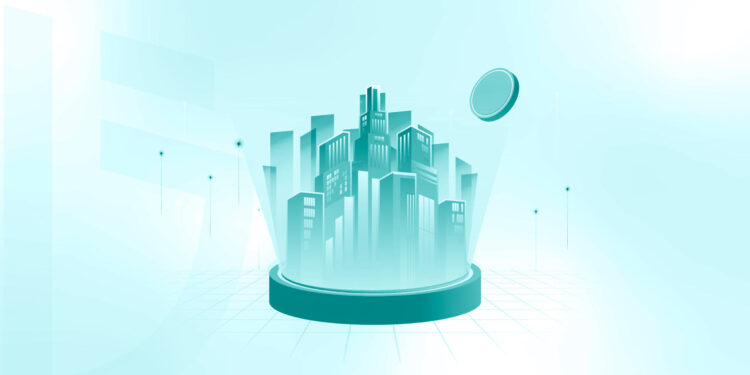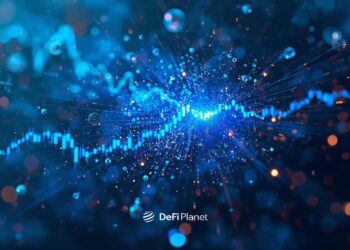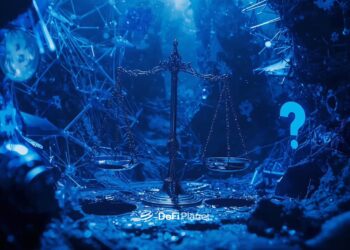Real-world asset (RWA) tokenization is one of the biggest new ideas in the blockchain space, and what it means in simple terms is turning real things, like money, houses, gold, or even art, into digital tokens that live on the blockchain. These tokens can then be bought, sold, or traded just like cryptocurrencies, with experts touting it to be a huge market and possibly worth hundreds of trillions of dollars because almost anything valuable can be tokenized and brought on-chain.
This is why more and more projects are trying to tokenize real-world assets and working on ways to bring things like cash, real estate, and commodities (like oil or gold) onto blockchains. This makes trading and owning these assets faster, easier, and more open.
In this article, we’ll explain what tokenized RWAs are, how they’re made, and all the important steps needed to make them work safely and correctly.
Why Tokenization Matters
Tokenization is the process of creating digital versions of tangible assets, and these digital tokens live on a blockchain, which, time and time again, has proven to be immutable and decentralized. Everything on the blockchain is open and easy to track, making the process in itself trustworthy and with tokenized assets.

By using tokenized assets, people can earn a steady income, access loans without banks, and invest in things that were once only available to large institutions. It also opens the door for financial systems to be more transparent and fair for everyone, not just the wealthy or those living in big cities.
As Sergey Nazarov, co-founder of Chainlink, said in an interview with CNBC:
“The tokenization of real-world assets is not just a trend, it’s the beginning of a global shift in how value moves and how financial agreements are made. We’re going to see everything from real estate to global trade become integrated with blockchain.”
This quote highlights just how big tokenization could become, not just for crypto users but for the entire world. It’s a way to connect traditional values with new digital tools, creating more trust, more access, and more opportunities.
Key Benefits of RWA Tokenization
- Enhanced Liquidity – Traditionally, assets like real estate and fine art are illiquid, requiring significant capital to buy or sell. Tokenization enables fractional ownership, allowing investors to trade smaller portions of high-value assets on blockchain-based exchanges.
- Increased Accessibility – By lowering the barriers to entry, tokenization democratizes investment opportunities. Retail investors can now participate in asset classes that were previously limited to high-net-worth individuals and institutions.
- Greater Transparency & Security – Blockchain’s immutability ensures secure, auditable transactions while reducing fraud and counterparty risks.
- Improved Efficiency and Reduced Costs – Smart contracts automate processes such as compliance, dividend distribution, and ownership transfers, thereby reducing the need for intermediaries and operational costs.
- Global Market Participation – Tokenized assets can be traded 24/7 across borders, allowing international investors to access diverse asset classes.
How RWAs Help DeFi Grow
RWAs can include various assets, such as property, government bonds, cash, or even commodities like oil and gold. These assets are converted into tokens and can be used in DeFi protocols to earn stable yield, a steady return that doesn’t fluctuate like crypto prices. This makes DeFi safer and more accessible, particularly for individuals who wish to avoid high-risk investments. This and many more are the innate advantages of real world assets tokenization.
READ ALSO: How Much Capital Can RWA Tokenization Really Funnel Into Crypto
Real Companies Are Getting Involved
Big companies are now bringing RWAs to the blockchain, with companies like BlackRock, one of the world’s largest asset managers, creating BUIDL, a blockchain-based fund that uses real U.S. dollars and government securities. It pays users a steady return, just like a traditional savings account. Other firms, such as Franklin Templeton, are also creating digital funds backed by real-world value.
READ MORE: Ethena Labs Expands Holdings In Blackrock’s BUIDL Token With 225M Investment
How On-Chain Credit Works
On-chain credit lets people borrow money using their tokenized assets as collateral, and what this means is that they don’t need a traditional bank. Platforms like Maple Finance, Goldfinch, and Centrifuge help users turn things like invoices or property into digital tokens. These tokens can then be used to get loans, creating more financial freedom for people and businesses everywhere.
The Benefits of RWA Protocols
RWAs offer many benefits, one of which is the ability to earn stable yields on real-world value. This is different from the high-risk trading that often happens in crypto, and secondly, they make financial systems more open in that you don’t need a bank account to take part; just access to the internet and a digital wallet. Finally, because everything is recorded on the blockchain, it’s easy to see where value comes from and where it goes.
Challenges to Watch For
Although RWAs are exciting, they still present challenges, as governments need to establish clear rules for their use. Projects also need to ensure that the real-world items behind the tokens are genuine and reasonably priced. Technology must stay safe too, because smart contracts need to work well to avoid any bugs or hacks.
The Future of DeFi and Tokenized Assets
Tokenized real-world assets are bringing trust, stability, and real value to DeFi 2.0, and they help people earn money with less risk, give access to credit without traditional banks, and grow the Web3 economy with assets that are easy to track and use. As more tools and rules are created, RWAs could become the heart of the next big DeFi boom.
Disclaimer: This article is intended solely for informational purposes and should not be considered trading or investment advice. Nothing herein should be construed as financial, legal, or tax advice. Trading or investing in cryptocurrencies carries a considerable risk of financial loss. Always conduct due diligence.
If you want to read more market analyses like this one, visit DeFi Planet and follow us on Twitter, LinkedIn, Facebook, Instagram, and CoinMarketCap Community.
Take control of your crypto portfolio with MARKETS PRO, DeFi Planet’s suite of analytics tools.”



















